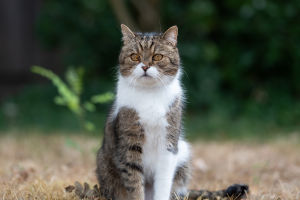Penguins are some of the most beloved and unique creatures in the animal kingdom. Known for their adorable waddle, distinctive black-and-white appearance, and playful personalities, penguins capture the hearts of nature enthusiasts worldwide.
But there's so much more to these flightless birds than their cute exterior. They are highly adapted to life in some of the harshest environments on Earth, and their behaviors and physical features offer fascinating insights into survival.
Penguins’ Unique Adaptations
Penguins have evolved a series of remarkable adaptations to thrive in cold, aquatic environments. Their sleek, streamlined bodies are built for swimming, not flying. While they may not take to the air, penguins are expert divers and can swim up to 22 miles per hour in search of food.
Their feathers provide insulation against the frigid temperatures of their icy homes. Underneath the smooth outer layer of feathers is a dense layer of down, trapping warm air against their bodies. Additionally, penguins have a thick layer of blubber that helps them retain heat, essential for surviving in cold waters.
Their wings have evolved into flippers, making them incredibly agile in the water. They use these flippers to "fly" underwater, propelling themselves forward with powerful strokes.
Penguins’ Remarkable Social Lives
Penguins are highly social animals and live in large colonies called rookeries. These colonies can number in the thousands, offering warmth, protection, and companionship. Penguins rely on each other for survival, huddling together to stay warm during the cold Antarctic winters.
Communication is key within a penguin colony. Penguins use a combination of vocalizations and body movements to communicate. Each penguin has a unique call that allows it to recognize its mate or chick, even in a crowded colony.
One of the most endearing aspects of penguin life is their courtship rituals. Many penguin species are monogamous, and the bond between mates is strong. They engage in elaborate displays of affection, such as bowing, preening each other’s feathers, or exchanging stones as gifts during nesting season.
Penguins’ Habitat and Distribution
Though they are often associated with the icy plains of Antarctica, penguins can be found across the Southern Hemisphere, with some species living in warmer climates. While the Emperor Penguin and Adélie Penguin call Antarctica home, species like the Galápagos Penguin live near the equator.
Penguins are mostly found in coastal regions, where they can access the ocean for food. Their primary diet consists of fish, squid, and krill, which they catch during their dives. Depending on the species, penguins can dive to depths of over 1,800 feet in search of food, holding their breath for up to 20 minutes!
Go Inside an Antarctic 'City' of 400,000 King Penguins — Ep. 4 | Wildlife: Resurrection Island
Video by National Geopraphic
The Emperor Penguin: A Symbol of Endurance
The Emperor Penguin is the largest and perhaps the most iconic penguin species. These impressive birds can grow up to four feet tall and weigh up to 88 pounds. They are also known for their incredible endurance, particularly during the harsh Antarctic winter when they breed.
During breeding season, male Emperor Penguins incubate the eggs while the females venture out to sea to feed. The males huddle together for warmth, often going without food for two months while they protect the eggs. When the females return, they take over chick-rearing duties while the males head out to sea to replenish themselves.
Penguins and Conservation
Unfortunately, many penguin species are facing threats due to climate change, habitat destruction, and overfishing. The warming of ocean waters and melting ice caps are shrinking the habitats of penguins in colder regions, while overfishing depletes their primary food sources.
Conservation efforts are critical to ensuring the survival of penguin populations. Organizations are working to protect penguin habitats, reduce carbon emissions, and manage fishing practices to ensure a stable food supply for these incredible birds.
Dear Lykkers! Penguins are more than just charismatic animals with a cute waddle; they are highly adapted creatures with fascinating behaviors and complex social lives. From their underwater agility to their heartwarming displays of affection, penguins continue to capture the imagination of people all over the world. However, as their Gface growing threats, it is more important than ever to protect these incredible birds and ensure their survival for future generations.


